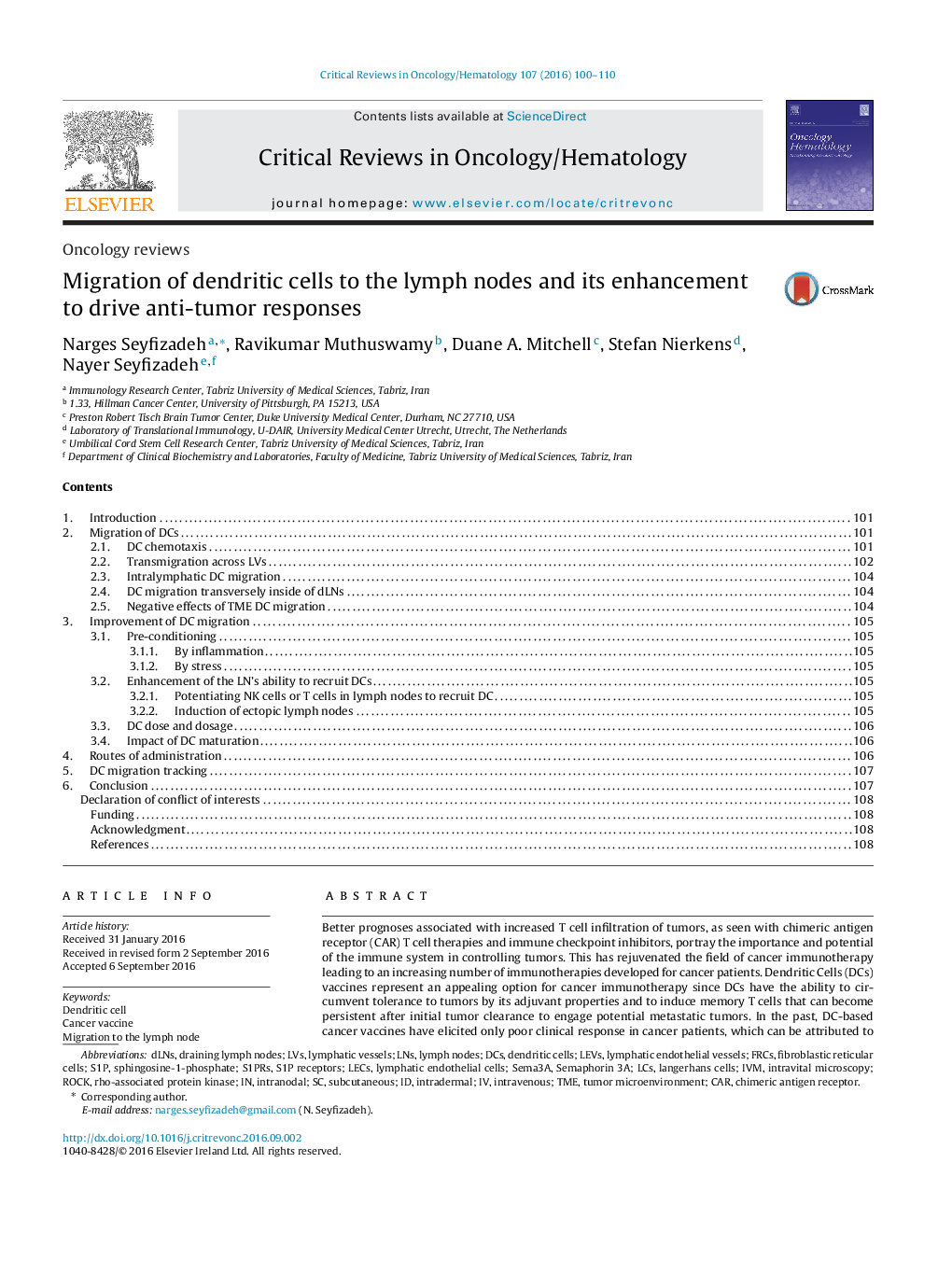| کد مقاله | کد نشریه | سال انتشار | مقاله انگلیسی | نسخه تمام متن |
|---|---|---|---|---|
| 3328521 | 1590710 | 2016 | 11 صفحه PDF | دانلود رایگان |
• We reviewed most of the known biomolecules affecting different steps of DC migration.
• CCR7/CCL21-19, CXCR4/CXCL12, CX3CR1/CX3CL1 are the main relevant axes in DC migration.
• Preconditioning of injection site seems to efficiently enhance DC migration.
• Optimal procedure and cocktail for DC culture are efficacious in migration of DCs.
• dLNs transversely migration of DCs is the least investigated phase of DC migration.
Better prognoses associated with increased T cell infiltration of tumors, as seen with chimeric antigen receptor (CAR) T cell therapies and immune checkpoint inhibitors, portray the importance and potential of the immune system in controlling tumors. This has rejuvenated the field of cancer immunotherapy leading to an increasing number of immunotherapies developed for cancer patients. Dendritic Cells (DCs) vaccines represent an appealing option for cancer immunotherapy since DCs have the ability to circumvent tolerance to tumors by its adjuvant properties and to induce memory T cells that can become persistent after initial tumor clearance to engage potential metastatic tumors. In the past, DC-based cancer vaccines have elicited only poor clinical response in cancer patients, which can be attributed to complex and a multitude of issues associated with generation, implementing, delivery of DC vaccine and their potential interaction with effector cells. The current review mainly focuses on migration/trafficking of DCs, as one of the key issues that affect the success of DC-based cancer vaccines, and discusses strategies to enhance it for cancer immunotherapy. Additionally, impact of maturation, route of DC delivery and negative effects of tumor microenvironment (TME) on DC homing to LN are reviewed. Moreover, strategies to increase the expression of genes involved in Lymph node homing, preconditioning of the vaccination site, enhancing lymph node ability to attract and receive DCs, while limiting negative impact of TME on DC migration are discussed.
Journal: Critical Reviews in Oncology/Hematology - Volume 107, November 2016, Pages 100–110
